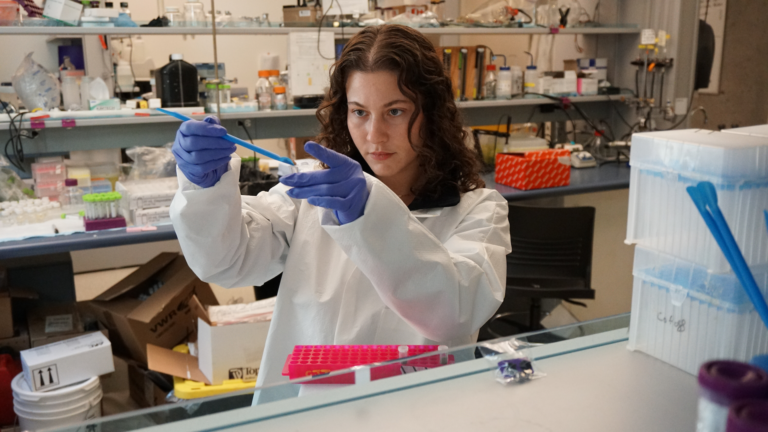Why your kids should take risks while playing outdoors this summer
UBC pediatric and injury prevention expert Dr. Mariana Brussoni reveals why risky play is so important for children’s health and development.

UBC pediatric and injury prevention expert Dr. Mariana Brussoni reveals why risky play is so important for children’s health and development.
With school out for another month, summer outdoor adventures continue for children across the country.
But whether it’s climbing trees or plunging into lakes by rope swing, outdoor play is a lot more than just fun. According to UBC’s Dr. Mariana Brussoni, outdoor play—particularly risky outdoor play—is essential to your child’s health and overall development.
Here, Dr. Brussoni, a professor in UBC’s department of pediatrics and the school of population and public health and director of the UBC Human Early Learning Partnership, breaks down the many benefits and offers tips for parents on how to encourage more risky play, while balancing safety.
First of all, what is risky play?
Risky play is any form of thrilling and exciting play, where children are engaging with uncertainty and where there’s a chance of physical injury. A child racing down a hill on their bike, climbing a tree, or fencing with sticks—these are all examples of risky play.
It’s the kind of play where children are pushing beyond their previous limits, seeing what their bodies are capable of and ultimately figuring things out for themselves. This will look different for every child, even those at the same developmental age. Balancing on a log might be considered risky play for one two-year old, but not for another with a lot of balancing experience.
Why is risky outdoor play important for children’s health and overall development?
There are physical benefits from providing children opportunities to be active, to explore diverse movements and strengthen their physical skills. Outdoor risky play has also been shown to offer many emotional, social and cognitive benefits: helping children to overcome their fears, build critical thinking skills, and become accustomed to coping independently with difficult situations.
The Canadian Paediatric Society sees risky play as so important that they released a statement earlier this year encouraging pediatricians to think of it as one way to help prevent and manage health problems in children, ranging from obesity to anxiety.
How can parents encourage risky outdoor play this summer?
There are three key ingredients: time, space and freedom. In other words, if parents carve out time, create stimulating play spaces and empower kids to play as they wish, it won’t be long before their kids are taking risks.
And offering a stimulating space doesn’t mean taking them to a fancy new playground with fixed equipment—it means providing an interesting space where they can explore. This could include loose parts that are all around us (think sand, leaves, sticks and stones) or materials (like tires, tarps and crates) that they can move around and really use their imagination with when playing.
What about safety?
As a parent, I understand that part of what it means to be a good parent is to keep your kids safe. But sometimes, our own worries and desire to protect our kids can result in setting too many limits, which can interfere with healthy development.
I like to remind parents that children should be kept as safe as necessary, not as safe as possible. Be ready to intervene, but unless a child’s play is becoming a serious danger to themselves or others, stand back. One way to do this is the 17-second rule. The next time you want to intervene, count to 17 and give yourself the time to figure out whether you really need to step in and what the harm might be in interrupting the play. Most of the time you’ll find that your child is perfectly fine and has managed the situation on their own.
At my lab, the Outside Play Lab, we’ve built a suite of free toolkits to help parents, caregivers and educators gain more confidence and skills to support risky play.
When extreme heat or wildfire smoke keeps kids inside, what are some good indoor ‘risky’ play alternatives?
When you need to keep your kids indoors, use the same three ingredients: time, space and freedom. Instead of offering a stimulating space with sand or branches, try using boxes, pillows or even the pots and pans from the kitchen!
The most important thing to remember—whether inside or outside—is to step back. Give your child the freedom to play the way they choose. When children can take risks, they’re building crucial skills for their future.

Featured Researcher
Professor, Dept. of Pediatrics, School of Population and Public Health



